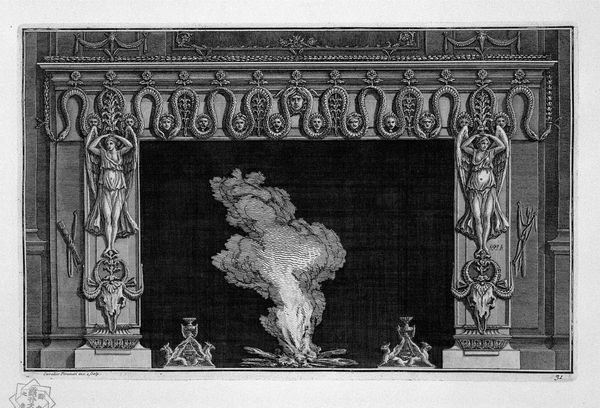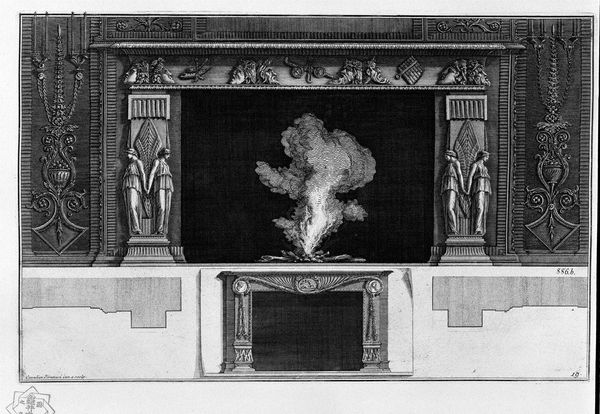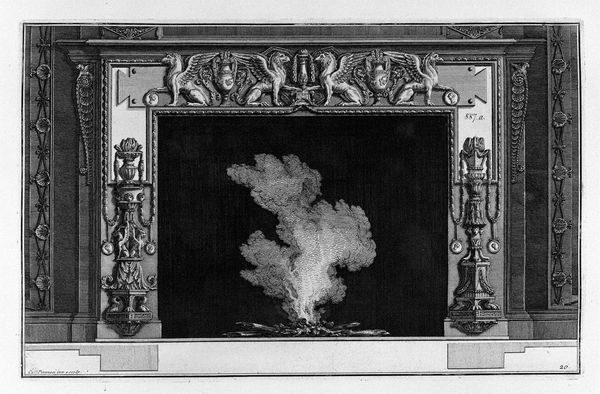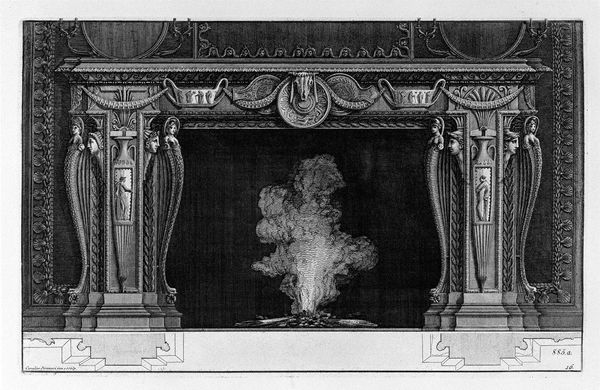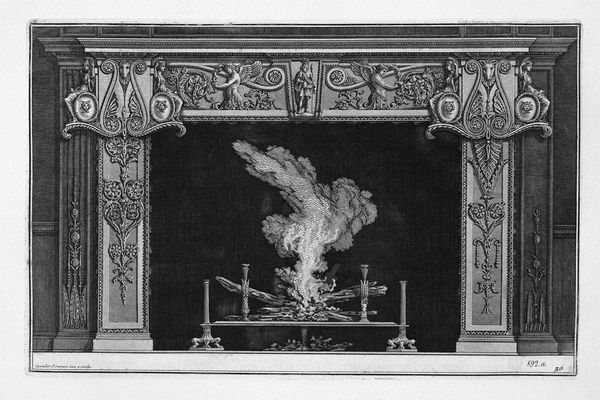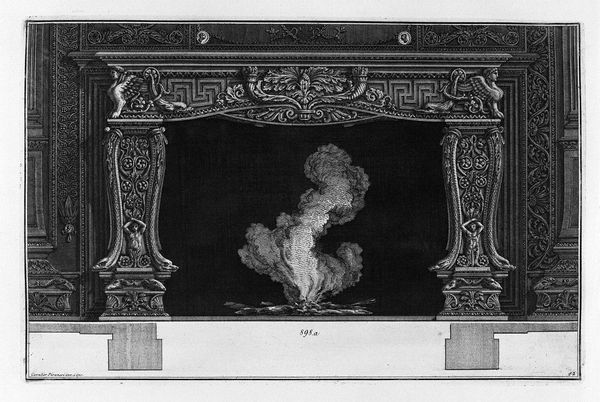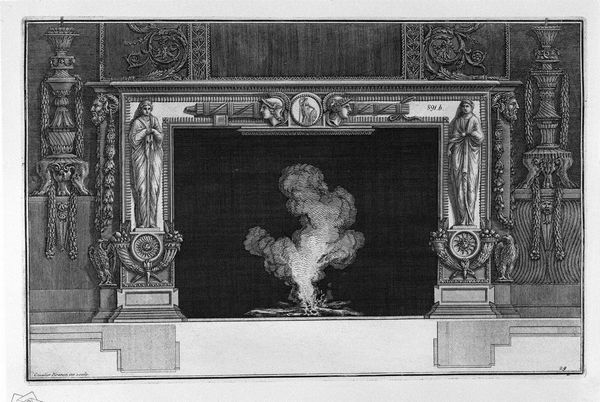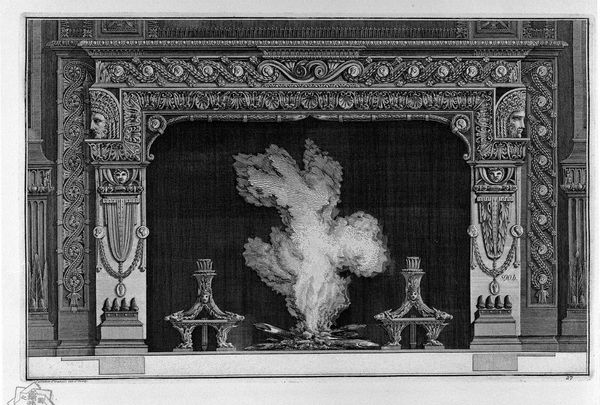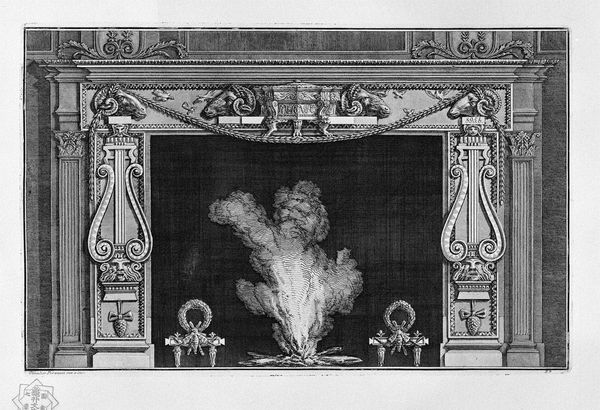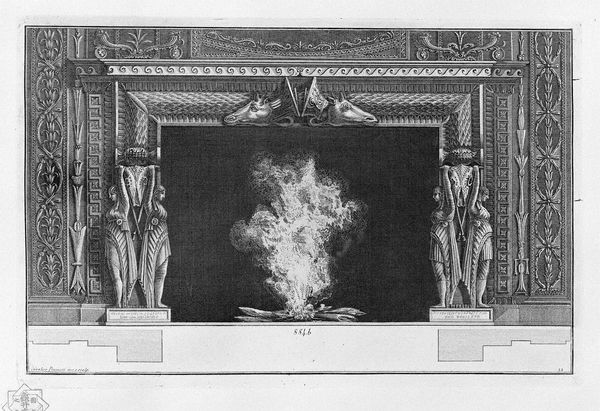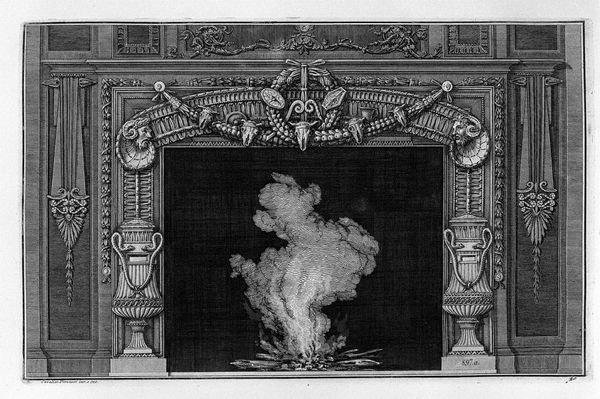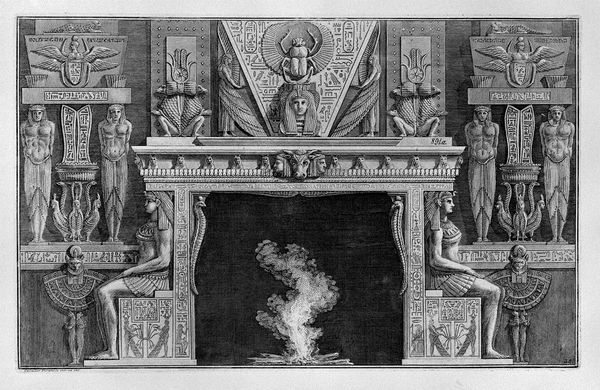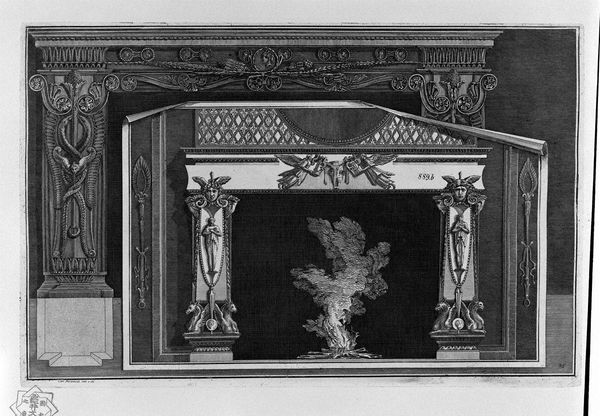
Fireplace: frieze on a medal with his imperial backhand; inside wing with two winged Victories
0:00
0:00
drawing, carving, print, metal, paper, sculpture, engraving, architecture
#
drawing
#
neoclacissism
#
carving
# print
#
metal
#
sculpture
#
paper
#
form
#
geometric
#
sculpture
#
carved
#
line
#
cityscape
#
engraving
#
architecture
#
statue
Copyright: Public domain
Curator: This intricate engraving is titled "Fireplace: frieze on a medal with his imperial backhand; inside wing with two winged Victories" by Giovanni Battista Piranesi. The stark contrasts immediately command attention, don't you think? Editor: Absolutely. There's a palpable sense of theatricality; the meticulous linework practically breathes life into the imagined fireplace. It evokes a stage setting, doesn't it? Almost dreamlike with these...flaming explosions rising where you expect a gentle hearth. Curator: Indeed. Note how Piranesi masterfully employs linear perspective to create a sense of depth, yet flattens certain planes, complicating our reading of the architectural space. The very structure itself—how would you describe its articulation of line? Editor: Highly stylized. You see the layers, almost stratigraphic, revealing both the design process and the laborious aspect of carving these refined neoclassical motifs from paper, from the drafting of concept to finished print. It makes me think of contemporary fabrication, too – that tension between drawing and material outcome. Curator: And those winged victories flanking the fire, perched almost precariously. Their delicate rendering is offset by the monumental scale implied by the architecture. Piranesi, here, I think, is investigating the relationship between decorative art and sublime scale, creating visual tension. It recalls powerful motifs but translates them through a detailed, reproductive medium. Editor: Exactly! There's a tension here, in how the materials available – paper, ink – become a vehicle for the reproduction of aristocratic grandeur; how easily this impressive spectacle of power could be infinitely produced. I wonder about the audience who could afford such refined taste—and the laborers making this happen behind the scenes? Curator: Such a pertinent point. We mustn't forget the consumption of such art and the society it sustained, especially the revival of antiquity in neoclassicism. The line and form create an illusion; the idea becomes its own truth beyond the artist’s process or patron's expectation. Editor: And for me, looking at how the material labor involved can question ideas about elite culture and craft, opens a richer, contemporary dialogue around these histories. Curator: It certainly brings so much context to mind when considering the artwork now, through new perspectives and an objective appreciation of material production and classical beauty. Editor: Precisely. From paper to power; it's all interconnected.
Comments
No comments
Be the first to comment and join the conversation on the ultimate creative platform.
